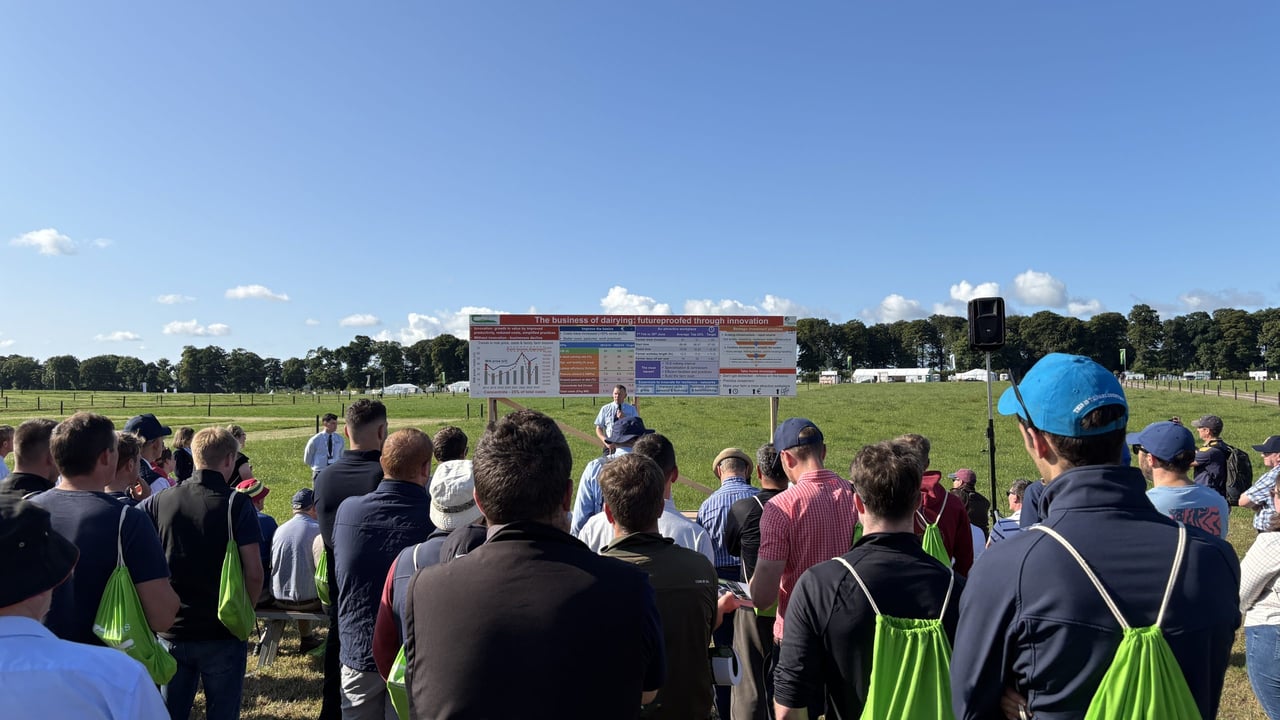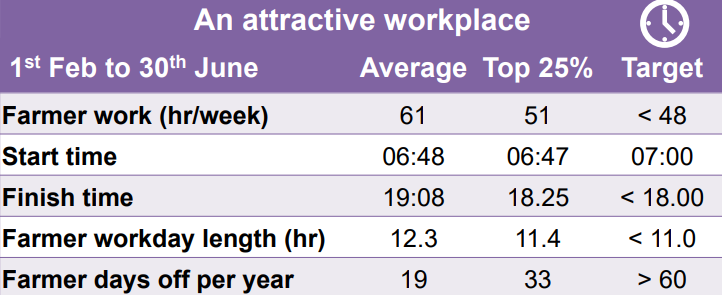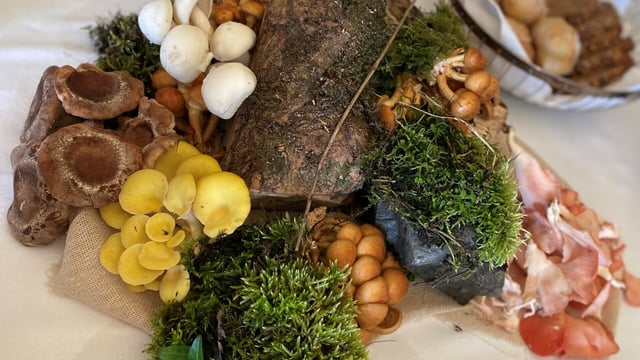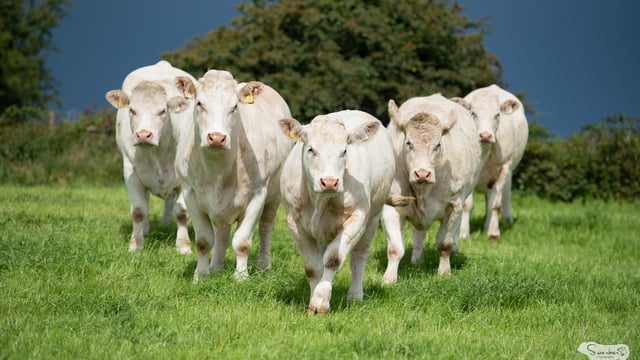Moorepark '25: The business of dairying
The business of dairying is one of the main topics being covered at Teagasc's Moorepark open day today (Wednesday, July 2) in Fermoy, Co. Cork.
Researchers within the Teagasc, Animal & Grassland Research and Innovation Centre - Padraig French, Brendan Horan, Conor Hogan, and Abigail Ryan - delivered the information on this topic.
The 'Business of Dairying' board focused on innovation on dairy farms which is the theme of this year's open day.
It also covered improving the basics, creating an attractive workplace, and strategic investment priorities.
According to Teagasc, these simple steps can help build resilience and futureproof farms.
The advisers at the board said that by implementing innovative practices, farms can experience growth in value.
Brendan Horan said every successful business needs to implement innovation to prevent it from failing, especially in volatile markets.
Horan and fellow adviser Padraig French discussed implementing innovation through improved productivity, reduced costs, and simplified practices.
With recent figures showing costs have increased by over 50% since 2020, Teagasc are advising farmers to improve the basics.
Horan mentioned that farmers must focus on improving their key performance indicators (KPI's) by "doing the simple things", such as breeding better cows, improving pastures, and creating easier working practices.
He noted that the percentage of concentrates in the diet have increased while that of grazed pasture has decreased.
Horan said that by reversing these figures, farmers can greatly improve profit margins.
The Teagasc researchers advised those attending the 'Business of Dairying' board to make strategic investments to ensure good cash flow.
The advisers stated that grazing infrastructure should be a main priority, adding that by improving soil fertility, roadways, and other infrastructure, as well as carrying out proper reseeding, a farm will experience "rapid returns".
Teagasc said its recent farm survey showed that while dairy farmers invested €50,000 back into the farm, only 10% of this went towards grazing infrastructure.
According to the advisers, developing facilities - which includes improving slurry storage, milking facilities, and animal housing - should be "priority number two".
Farms should do this to simplify their systems, saving costs in the long run, especially in terms of labour, according to the advisers.
The board recommended investing in automation should be the next priority for farmers.
The advisors noted that there are proven innovations available - including milking, gap releases, automatic calf feeders automatic heat detection and more - but recognised that these come at a cost.
Hogan said farmers should ask themselves "What is a young person looking for?" when trying to make their farm business attractive to labourers.
He added that if farmers want to create a flexible working environment in which they can take days off, they must be proactive in setting up an attractive system.
Hogan stated that farms should be aiming for a milking interval of eight hours between morning and evening milkings, and 16 hours between evening and morning milkings to make their farm an attractive workplace.
The Moorepark-based researcher added that the farm should be equipped with efficient facilities and practices, and should also build a team of reliable workers to allow for time off.
The Teagasc recommendations for working hours is outlined below.






